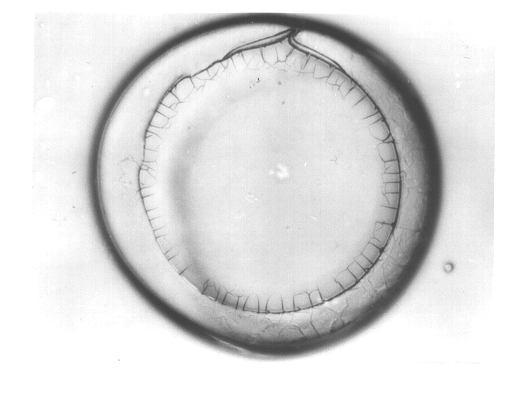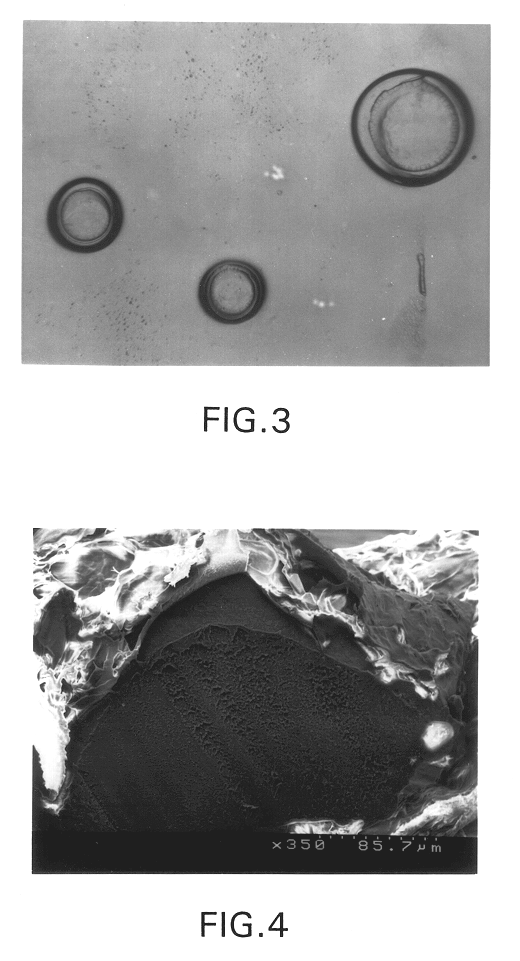Multiwall polymeric microcapsules from hydrophilic polymers
a polymer and polymer technology, applied in the field of multi-wall polymeric microcapsules from hydrophilic polymers, can solve problems such as suspension or emulsion
- Summary
- Abstract
- Description
- Claims
- Application Information
AI Technical Summary
Benefits of technology
Problems solved by technology
Method used
Image
Examples
example 2
Microspheres Prepared from Agarose and Gelatin
A similar method to Example 1 was used with agarose and gelatin as the polymers, however, in this case, the differences in gelation temperatures induced phase separation. Separate solutions of 20% agarose (w / v) and 4% gelatin (w / v) were prepared and maintained at 50.degree. C. to keep the solutions in the liquid state. The solutions were mixed in equal volumes, dispersed by shaking and poured into 300 mL of mineral oil at 80.degree. C. The mixture was stirred until the emulsion droplets were of an appropriate size range, then the oil bath was rapidly cooled to 4.degree. C. The microspheres were collected by decanting the oil and were washed with ethanol. The spheres were analyzed with scanning electron microscopy (SEM) (FIG. 4). The inner core of these spheres consisted of agarose, which solidifies at 42.degree. C., while the outer core consisted of gelatin which solidifies at 4.degree. C.
PUM
| Property | Measurement | Unit |
|---|---|---|
| gelling temperature | aaaaa | aaaaa |
| gelling temperature | aaaaa | aaaaa |
| gelling temperature | aaaaa | aaaaa |
Abstract
Description
Claims
Application Information
 Login to View More
Login to View More - R&D
- Intellectual Property
- Life Sciences
- Materials
- Tech Scout
- Unparalleled Data Quality
- Higher Quality Content
- 60% Fewer Hallucinations
Browse by: Latest US Patents, China's latest patents, Technical Efficacy Thesaurus, Application Domain, Technology Topic, Popular Technical Reports.
© 2025 PatSnap. All rights reserved.Legal|Privacy policy|Modern Slavery Act Transparency Statement|Sitemap|About US| Contact US: help@patsnap.com



